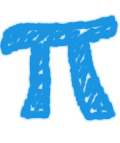Using mathematics to fight cancer
Date: Mon, Aug 13, 2018
Location: PIMS, University of British Columbia
Conference: Diversity in Mathematics
Subject: Mathematics, Medical Applications and Epidemiology, Applied Mathematics
Class: Scientific
Abstract:
What can mathematics tell us about the treatment of cancer? In this talk I will present some of work that I have done in the modeling of tumor growth and treatment over the last fifteen years.
Cancer is a myriad of individual diseases, with the common feature that an individual's own cells have become malignant. Thus, the treatment of cancer poses great challenges, since an attack must be mounted against cells that are nearly identical to normal cells. Mathematical models that describe tumor growth in tissue, the immune response, and the administration of different therapies can suggest treatment strategies that optimize treatment efficacy and minimize negative side-effects.
However, the inherent complexity of the immune system and the spatial heterogeneity of human tissue gives rise to mathematical models that pose unique challenges for the mathematician. In this talk I will give a few examples of how doctors, immunologists, and mathematicians can work together to understand the development of the disease and to design effective treatments.
This talk is part of the PIMS Diversity in Mathematics Summer School and is intended for a general audience: no knowledge of biology or advanced mathematics will be assumed.
Biography
A California native, Professor Radunskaya received her Ph.D. in Mathematics from Stanford University. She has been a faculty member in the Math Department Pomona College since 1994.
In her research, she specializes in ergodic theory, dynamical systems, and applications to various "real-world" problems. Some current research projects involve mathematical models of cancer immunotherapy, developing strategies for targeted drug delivery to the brain, and studying stochastic perturbations of dynamical systems.
Prior to her academic career, Professor Radunskaya worked extensively as a cellist and composer. Her music, described as "techno-clectic", combines traditional forms with improvisation, acoustic sounds with electronic, computer-generated, and found sounds, and abstract structures with narrative visual and sonic elements.
Contrary to popular belief, Professor Radunskaya thinks that anyone can succeed in mathematics, and she has committed herself to increasing the participation of women and underrepresented groups in the mathematical sciences.
She is currently the President of the Association for Women in Mathematics, and co-directs the EDGE (Enhancing Diversity in Graduate Education) program, which won a "Mathematics Program that Makes a Difference" award from the American Mathematics Society in 2007, and a Presidential Award for Excellence in Science, Mathematics and Engineering Mentoring (PAESMEM) in 2015.
Professor Radunskaya was recently been elected as a Fellow of the American Math Society, and she is the recipient of several awards, including a WIG teaching award in 2012, and the 2017 AAAS Mentor award.



